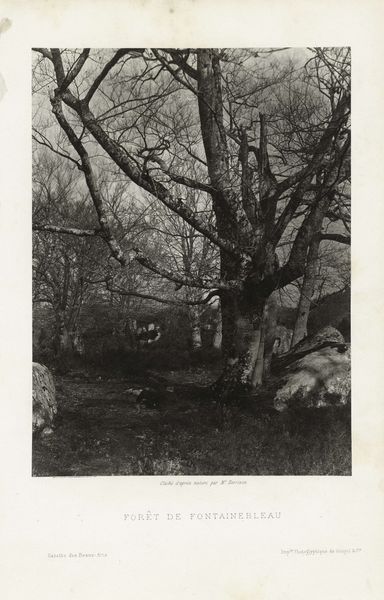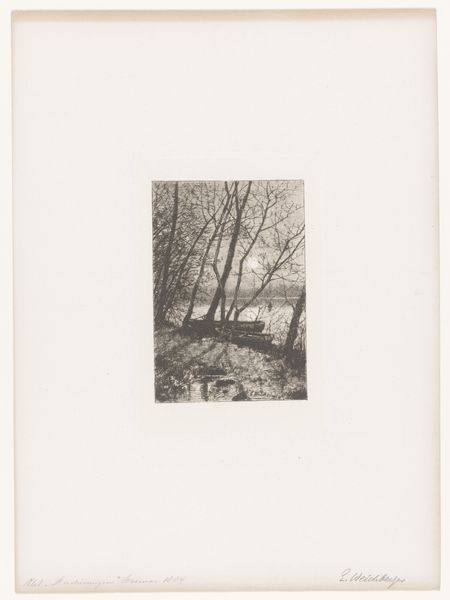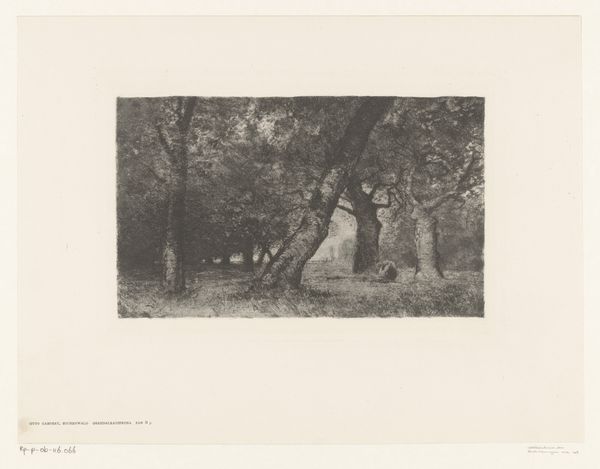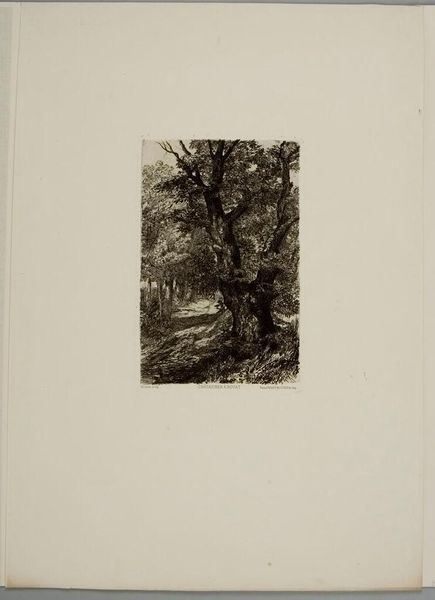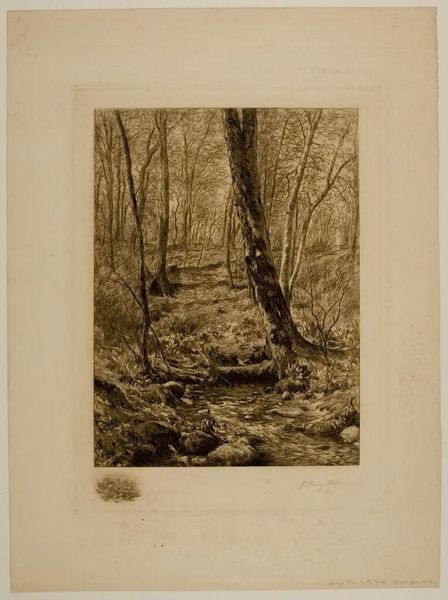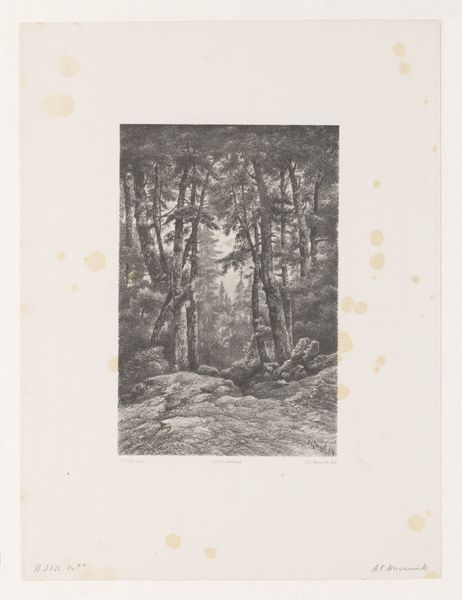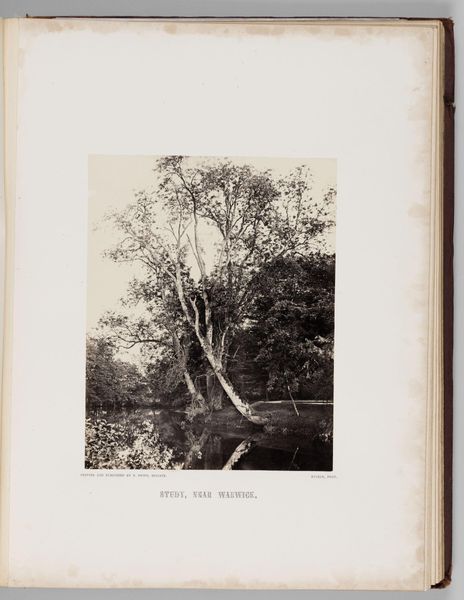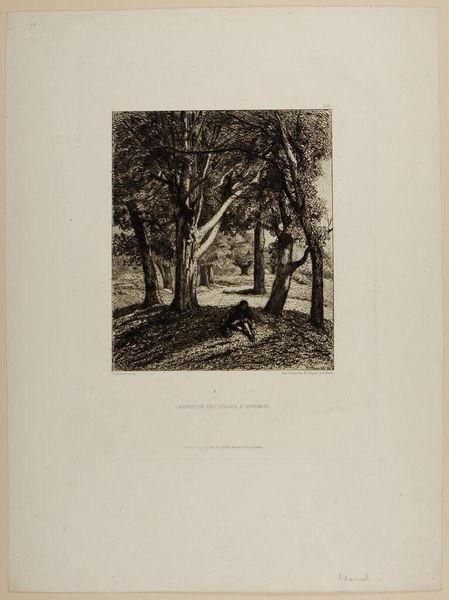
#
pencil drawn
#
photo of handprinted image
#
light pencil work
#
pencil sketch
#
light coloured
#
pencil drawing
#
forest
#
pencil work
#
tonal art
#
remaining negative space
#
watercolor
Dimensions: height 184 mm, width 170 mm, height 442 mm, width 491 mm
Copyright: Rijks Museum: Open Domain
Editor: This is a pencil drawing from 1870 titled "Bos van Fontainebleau." It feels…still and a bit melancholic. The trees look bare, it’s a very muted palette. What strikes you about this piece? Curator: I see more than just bare trees in this forest; I see a reflection of its time, its place in French society. In 1870, France was in turmoil, recovering from the Franco-Prussian War. What might a seemingly straightforward landscape reveal about societal anxieties? Do you notice how the starkness of the trees against the light suggests a landscape stripped bare by conflict? Editor: I guess I hadn’t considered the historical context, but you're right, the emptiness is palpable. It's less romantic, more…real. But a drawing of a forest, how can that speak to the larger issues of the time? Curator: Think about it: The Fontainebleau forest wasn't just a place of natural beauty; it was also a site of leisure for the elite. This image asks who has access to nature, and who is dispossessed. Moreover, the act of drawing itself – a slower, more deliberate medium than, say, photography – it implies a desire for careful observation, perhaps a longing for permanence in a time of upheaval. This wasn’t untouched wilderness, was it? The image isn’t just what is shown; it's also about what is absent. Where are the people? Editor: I see your point. I was initially drawn to the composition but thinking about it in relation to society is much more interesting. Thank you for your insights! Curator: Remember, art doesn't exist in a vacuum. It reflects, refracts, and even resists the dominant power structures of its time. Editor: I'll definitely keep that in mind! I will never look at landscapes the same way again.
Comments
No comments
Be the first to comment and join the conversation on the ultimate creative platform.
